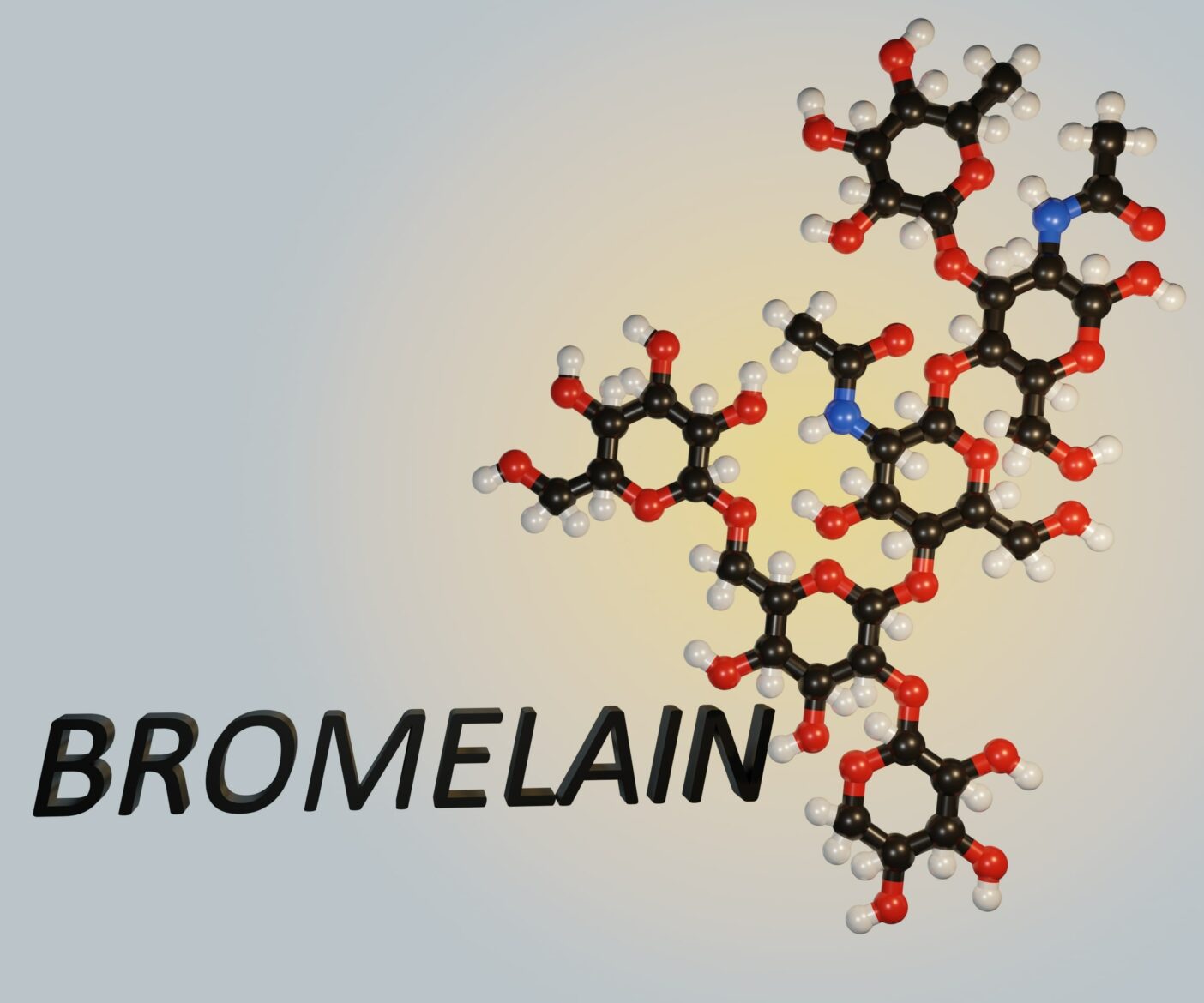Peptidases

Peptidases are enzymes that can cleave peptide bonds of proteins and peptides by hydrolization. They are also called proteases or proteinases, but basically the term peptidases is a short form for peptide bond hydrolases. The enzymes are found in the cells and tissues of all organisms and are active both extracellularly and intracellularly. Today, science knows far more than 200 different peptidases. They are divided into different categories:
– Extracellular peptidases break down food and are found in the digestive tract.
– Intracellular peptidases have the ability to regulate protein content within a cell.
– Endopeptidases are divided into aspartate proteinases, cystine proteinases, and serine proteinases and attack within the peptide chain.
– Exopeptidases are divided into carboxypeptidases and aminopeptidases and always attack the outer end of the peptide chain.
Animal organisms mainly produce protein-cleaving digestive enzymes such as pepsin, chymosin or trypsin. In the plant world, pineapple, for example, has a very high protease activity with the enzyme papain.
The use of peptidases
Peptidase products are used in many areas. In food processing, peptidases are used as baking enzymes to improve dough texture, and they also help to optimize the flavor of cheese and dairy products. They are also used in the production of hypoallergenic foods: In this process, the peptidases specifically degrade allergenic proteins that would normally trigger various reactions in allergy sufferers. In this way, hypoallergenic infant and baby food can be obtained from cow’s milk, for example.
In detergents and cleaning agents, peptidases break down protein-containing soiling, and in the textile industry they are used to treat wool and raw silk.
And peptidases also play a major role in cosmetics, as some of them have anti-aging properties and, among other things, stimulate collagen production in the skin. Others have anti-inflammatory properties.
Peptidases in cosmetics
Bromelain is extracted from pineapple and has both anti-coagulant and anti-inflammatory effects. Studies have already shown that bromelain has good wound-healing properties. Areas of application therefore include phlebitis with and without thrombosis, swelling after injury or surgery, and blood clots. In cosmetic preparations, bromelain has a refreshing, soothing and anti-irritant effect. It also removes dead cells from the skin surface.
Fact Sheet Bromelain
INCI: Bromelain
CAS number: 37189-34-7
EINECS number: 232-572-4
Papain is found in high concentration in the peel and seeds of papaya. The enzyme is known to promote wound healing and repair skin damage and burns. In 1950, two scientists found that papain has worm-killing properties. The enzyme is also said to be able to whiten discolored teeth.
Anti-aging products containing papain can help the skin remain elastic and firm. In addition, similar to bromelain, papain sloughs off dead skin cells, which can not only reduce wrinkles but also help keep pores from clogging as easily. Corresponding products are therefore also used against acne. In hair care, papain has an antistatic and conditioning effect.
Fact Sheet Papain
INCI: Papain
CAS number: 9001-73-4
EINECS number: 232-627-2
Subtilisin is a protease from bacteria and a valuable ingredient in enzyme peels. The substance dissolves old horny cells and stimulates the formation of new cells, so that the skin structure is subsequently much smoother and the complexion looks more even. Peelings with subtilisin are gentler and kinder to skin than peeling with fruit acids or salicylic acid. The enzyme is also very suitable for cosmetic cleansing products.
Fact Sheet Subtilisin
INCI: Subtilisin
CAS number: 9014-01-1
EINECS number: 232-752-2
Carica papaya fruit extract is an extract from the fruit of Carica papaya. It is mainly used for its softening, moisturizing and exfoliating properties. The extract is excellent for dry or prematurely aging skin, as it promotes skin cell renewal and rejuvenates the skin.
Fact Sheet Carica Papaya Fruit Extract
INCI: Carica Papaya (Papaya) Fruit Extract
CAS number: 84012-30-6
EINECS number: 281-675-0
Pineapple Sativus Fruit Extract is an extract from the fruit of the Pineapple Sativus and is enormously effective as an antioxidant and anti-aging skin care product. It moisturizes, regenerates, and improves the appearance of the skin. The extract is also suitable for peelings.
Fact Sheet Pineapple Sativus Fruit Extract
INCI: Pineapple Sativus Fruit Extract
CAS number: 68917-26-0
EINECS number: 272-839-2
Peptidases in Cosmacon formulations
Peptidases have gained significant popularity in cosmetics in recent years. Not without reason, because the enzymes have many valuable properties. Cosmacon will be happy to develop high-quality formulations for sophisticated cosmetics for you.
Literature:
Proteolytic activity of cosmetic enzyme peel products.
Bialkowski K.Acta Biochim Pol. 2022 Oct 24;69(4):895-899
Campos DA, Ribeiro TB, Teixeira JA, Pastrana L, Pintado MM.Foods. 2020 Jan 7;9(1):60